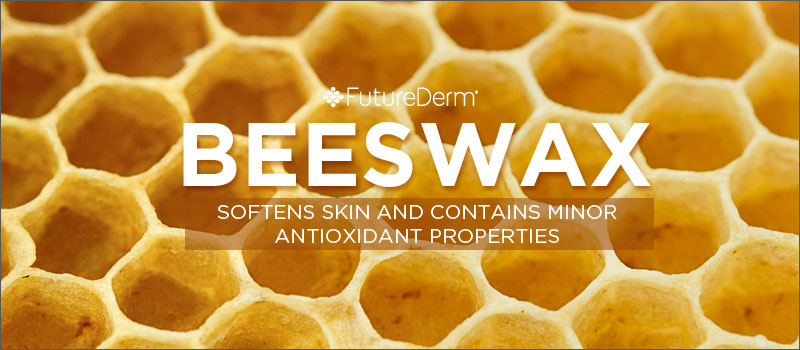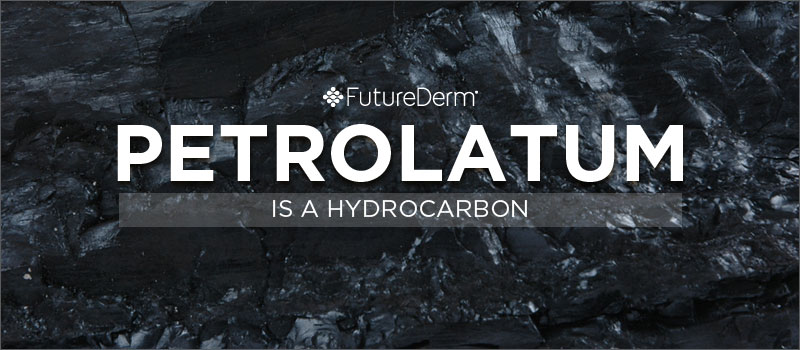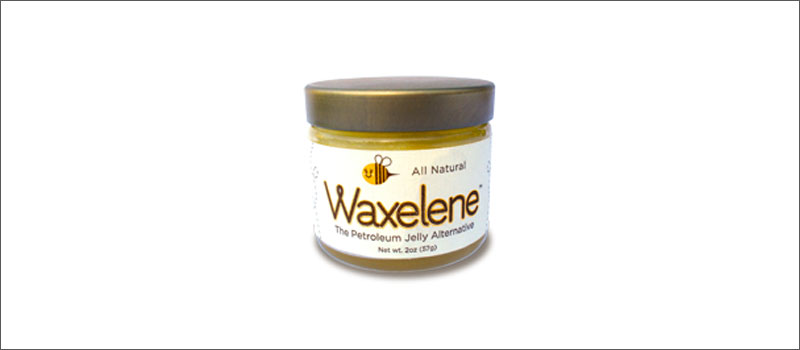Petrolatum gets a bad rap in a lot of areas; there are rumors it may cause cancer, clog the pores, or even cause premature aging. All of these I’ve researched and come to the personal conclusion are false. [Read more: The Truth About Petrolatum]
The lips are more prone than the rest of the face to dry out, especially in the cold winter months. This is because the skin of the lips is thinner than the rest of the face, and there are no oil glands present there. The result? Dry, chapped, peeling, and sometimes painful or bleeding lips! Sigh.
Does Petrolatum Dry Out the Lips?
In a word, no.
In fact, many dermatologists consider petrolatum to be one of the best moisturizers (Cosmetic Dermatology, 2002). Cosmetic-grade petrolatum has been affirmed to be non-comedogenic and to not cause allergic reactions (American Academy of Dermatology Invitational on Comedogenicity, 1989).
Petrolatum rests on top of the skin, forming a water-repelling film. On the one hand, this makes it is a great moisturizer. On the other hand, you have to be careful what you use with petrolatum, because it locks other ingredients in a moisturizer deep within the skin. For instance, potentially irritating ingredients like lanolin, eucalyptus, mint, and isopropyl myristate travel through petrolatum and get through to your lips, penetrating the skin (Cosmetic Dermatology, 2002). But then they are locked in there, under petrolatum, and unable to get out!
On its own, however, petrolatum moisturizes well. Just be careful what you use with it.
Does Petrolatum Increase UV Damage?
Unlike many lip glosses and shiny lipsticks that can cause UV light to bounce all over your face and lips, petrolatum does not have these reflective properties.
In a clinical study that tested (in-part) the effects of petrolatum on UVA and UVB absorption, it was shown that petrolatum was actually able to impart mild blocking effects on both types of UV irradiation. This was confirmed in a second study, which compared petrolatum to olive oil and glycerin, and found that petrolatum blocks UV light while both olive oil and glycerin do not (Photodermatology, Photoimmunology, and Photomedicine, 2006).
Take heed: This doesn’t mean petrolatum is the next sunscreen. It simply means that petrolatum provides a protection level of something like SPF 1-2, and doesn’t exacerbate UV damage.
Is Petrolatum “Green”?
Petrolatum is a hydrocarbon, traditionally derived from the distillation of oil.
Due to growing concerns that petrolatum is sourced from non-renewable sources, some skin care and cosmetics companies have started to use “hybrid petrolatums” derived from a combination of vegetable oils and waxes.
Most, however, do not.
If you are ultra big on the green movement, you may wish to avoid petrolatum. However, as cosmetic chemist Rebecca James Gadberry, Ph.D., has noted, many people do not realize that more than 50% of the ingredients used in cosmetics are derived from non-renewable resources as well.
So perhaps methods like avoiding plastic bags, reusing water bottles, and recycling are more sustainable, valid efforts than avoiding petrolatum. Of course, every effort counts – this is your choice.
My favorite lip balm is Clinique Superbalm ($15, Amazon.com).
Besides I love it, I swear by it, I can’t live without it, there’s not much else to say about Clinique Superbalm. Well, I guess until you get into the superb ingredients list, which includes ultra-hydrating linoleic acid, soothing aloe, antioxidant powerhouses vitamins C and E, and even calming lavender extract. None of these ingredients are irritating, so petrolatum is not an issue.
My lips used to get chapped regularly until I started putting this on my lips every night, and then it stopped.
What’s more, I secretly take a dallop of Clinique Superbalm on the tip of my finger and rub it around my nose whenever I have a cold and the skin has become dry and cracked. It heals it within 2-3 days, no kidding. (I guess this also is no longer a secret. Oh well!)
Definitely a must-have, if you are not concerned about petrolatum.
Beeswax: My Favorite Petrolatum Alternative

If you are concerned about the green movement, consider beeswax.
Beeswax is a skin-softening ingredient with occlusive properties and minor antioxidant properties (NC State University). Beeswax was found to work better than barrier creams at protecting dental lab technicians’ hands from irritation (Journal of the Germany Society of Dermatology).
One of my favorite petrolatum-free lip treatments is Waxelene ($16.47, Amazon.com), with vitamin E, rosemary, and other antioxidants. It also contains soy, which may be a concern for some people. Some people may not wish to use soy products because some lip balm is inevitably ingested, and soy has mild estrogenic properties. I personally have a thyroid problem and need to avoid soy, so I use petrolatum.
Soy aside, Waxelene makes a great lip balm. It is not as thick as petrolatum and is about the consistency of a typical Chapstick, very spreadable and moisturizing. It has a more pleasant scent than petroleum, a sort of sweet and wax smell of beeswax cut slightly by the fresh smell of rosemary.
Waxelene absorbs into the lips a bit more than petrolatum, so while it may require some reapplication to maintain a thick layer, it works better as something that can be used when you’re running out.
I personally found that my lips felt softer after using Waxelene.
Soybean: Pros and Cons
Soybean oil is a moisturizer that works in the same way as petrolatum: that is, they are both occlusive agents, locking moisture (and other ingredients) into the skin.
Soybean oil provides the additional benefits that it is sustainable and contains nutrients like amino acids, isoflavins, lecithins, poly- and mono-unsaturated fats, saponins, phytosterols, phytic acid, minerals, and vitamins (whew!).
The isoflavone genistein found in soybean oil has also been found to stimulate production of collagen (British Journal of Dermatology). This may be helpful in sustaining fuller, softer lips in the long run.
Some people may not wish to use soy products because some lip balm is inevitably ingested, and soy has mild estrogenic properties. I personally have a thyroid problem and need to avoid soy, so I use either petrolatum or beeswax.
Another possible issue with soybean oil is that it should not be used near broken skin. Soybean oil has been shown to impair barrier function when compared to skin treated with Aquaphor or sunflower seed oil (Acta Paediatrica). Whereas petrolatum forms a protective barrier over the skin that’s hydrophobic (water-repellant) and doesn’t impair barrier function, soybean oil does the opposite (Dermatological Surgery).
As long as soy is not an issue for you and the product is not applied to broken skin, I like Crazy Rumors Lip Balm ($7.33, Amazon.com). With additional moisturizing ingredients like vitamin E, jojoba oil, and shea butter, and fun flavors like Creamsicle and Raspberry Sherbet, this is one of my favorite products for the winter! It glides across the skin well and provides a solid moisturizing experience.
Bottom Line
Petrolatum is not petroleum – and cosmetic-grade petrolatum is, by and large, safe.
The only two valid concerns, scientifically-speaking, are the fact that petrolatum should not be used with irritating ingredients like lanolin, mint, and eucalyptus (Cosmetic Dermatology, 2002), and that petrolatum typically does not come from an entirely renewable resource, However, cosmetics companies are becoming increasingly better about the last point.
What are your thoughts on petrolatum lip balms? Got any questions at all? Let us know in Comments!
Looking for the best skin care? FutureDerm is committed to having its customers find — and create — the best skin care for their individual skin type, concern, and based on your ingredient preferences. Learn more by visiting the FutureDerm shop!






